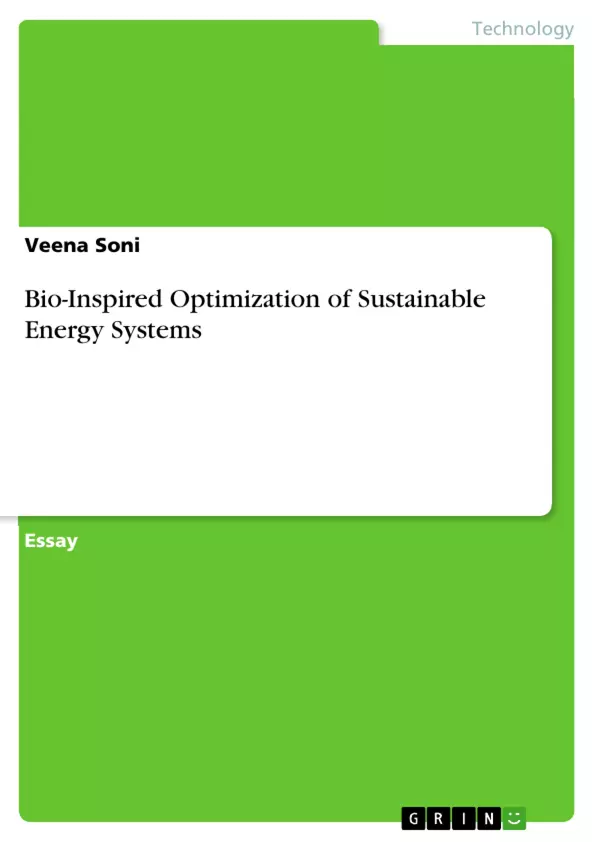In this paper the author sums up the ongoing advances in bio-enlivened improvement techniques, including fake neural systems, transformative calculations, swarm knowledge, and their hybridizations, which are applied to the field of practical vitality advancement. Writing assessed in this paper shows the present status of the craftsmanship and talks about the potential future examination patterns.
Reasonable vitality advancement consistently includes complex streamlining issues of configuration, arranging, and control, which are frequently computationally hard for regular enhancement strategies. Luckily, the persistent advances in man-made reasoning have brought about an expanding number of heuristic enhancement techniques for adequately taking care of those muddled issues. Especially, calculations that are enlivened by the standards of common natural development and additionally aggregate conduct of social provinces have demonstrated a promising presentation and are turning out to be increasingly more well-known these days.
Inhaltsverzeichnis (Table of Contents)
- Abstract
- Introduction
- Artificial Neural Networks
- Evolutionary Algorithms
- Swarm Intelligence
- Hybrid Methods
- Discussion and Conclusion
- REFERENCES
Zielsetzung und Themenschwerpunkte (Objectives and Key Themes)
This review paper aims to provide an overview of recent advancements in bio-inspired optimization techniques for sustainable energy systems. It specifically focuses on artificial neural networks, evolutionary algorithms, swarm intelligence, and hybrid methods, analyzing their applications in the design, planning, and control of renewable energy systems. The paper discusses the potential future research directions in this field, highlighting the current status of these techniques and their relevance in achieving sustainable development.
- Bio-inspired optimization techniques for sustainable energy systems
- Artificial Neural Networks (ANNs) and their applications in renewable energy
- Evolutionary Algorithms (EAs) and their role in optimizing energy systems
- Swarm Intelligence and its potential in sustainable energy development
- Hybrid methods combining different bio-inspired techniques
Zusammenfassung der Kapitel (Chapter Summaries)
- Introduction: This chapter presents the increasing demand for energy and the need for sustainable energy solutions. It discusses the challenges posed by conventional optimization methods in addressing complex energy systems, emphasizing the importance of bio-inspired approaches.
- Artificial Neural Networks (ANNs): This chapter explores the application of ANNs in renewable energy forecasting, including predicting wind and solar power generation. It examines their strengths in handling nonlinear relationships and their limitations, such as long training times and interpretability issues.
- Evolutionary Algorithms (EAs): This section focuses on the use of EAs in optimizing various aspects of energy systems. It highlights their ability to handle complex, multi-objective optimization problems, demonstrating their efficacy in renewable energy integration and resource allocation.
- Swarm Intelligence: This chapter introduces swarm intelligence algorithms inspired by collective behavior in nature, such as ant colonies and bird flocks. It explores their application in solving optimization challenges related to energy storage, energy management, and power grid design.
Schlüsselwörter (Keywords)
Bio-inspired optimization, sustainable energy systems, artificial neural networks, evolutionary algorithms, swarm intelligence, hybrid methods, renewable energy, optimization, design, planning, control, energy forecasting, energy management, power grid, sustainable development.
- Quote paper
- Veena Soni (Author), 2012, Bio-Inspired Optimization of Sustainable Energy Systems, Munich, GRIN Verlag, https://www.grin.com/document/916070



